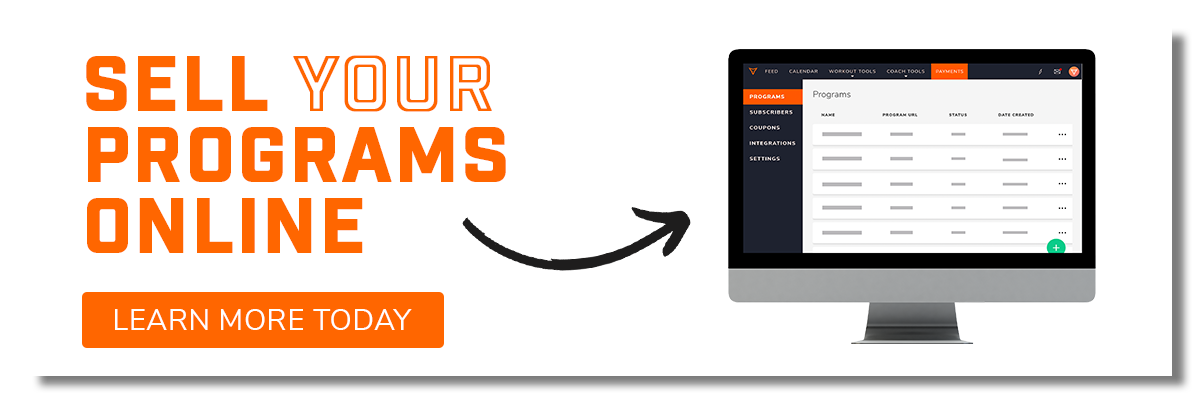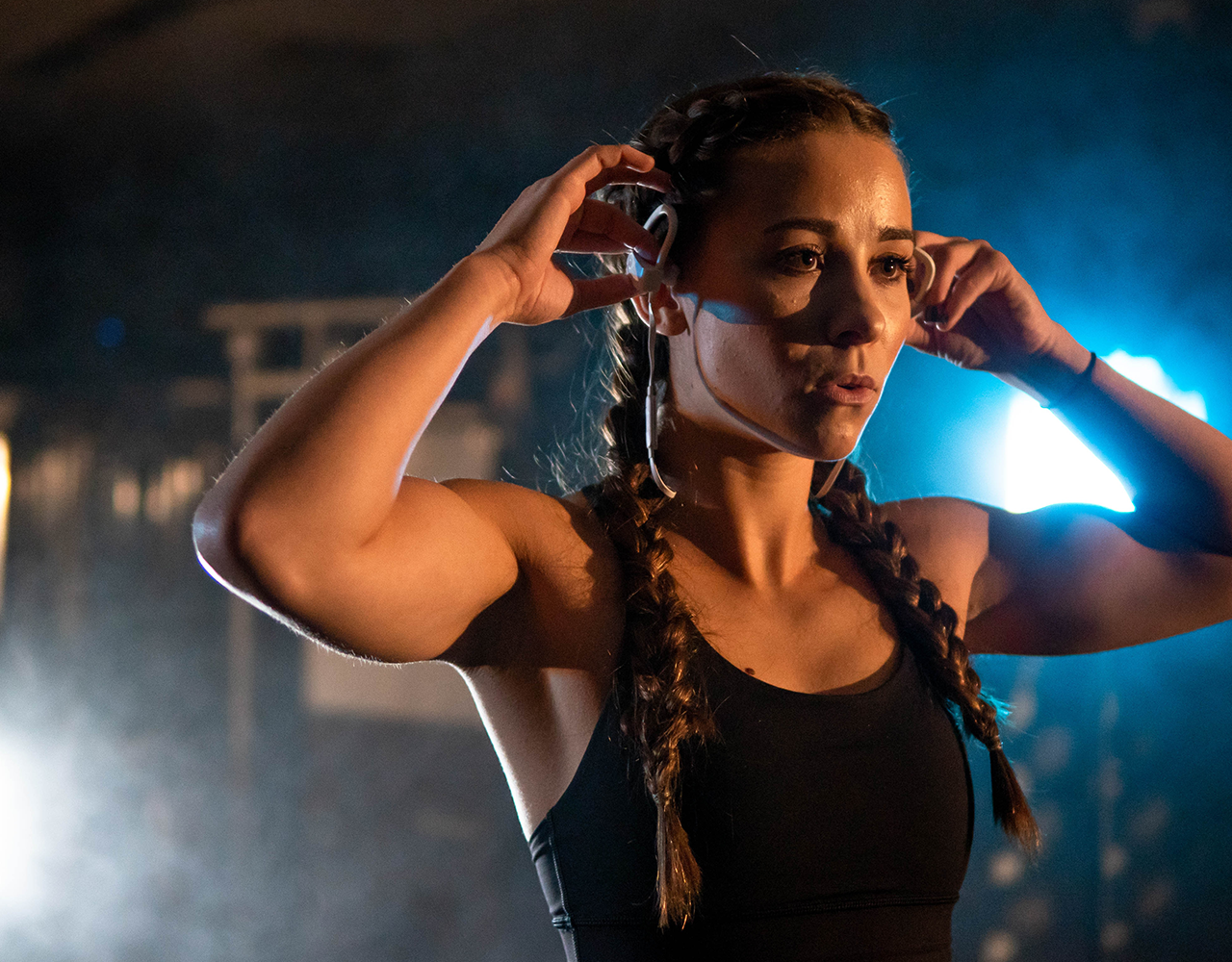How Fitness Becomes Healthcare
If you are anything like me, you had the opportunity to make a living doing something outside of the fitness industry, but found the prospects of pursuing those opportunities unfulfilling. The path for you was clear--you wanted to be in fitness because you genuinely wanted to be a force for good, and to help people change their lives for the better.
When I started pursuing my noble career as a fitness professional, the fulfillment I felt was at its all-time high. I was enthusiastic, optimistic, excited, and nervous at the same time. The corporate gig would have been so much more comfortable: pension, benefits, steady salary, pay raises every year, certainty of safety, and security. However, I was choosing a path that included no guarantees of any of those things.
I started my career in fitness working as a personal trainer. Frankly, I was happy to give the gym most of the money for each session I performed because, in return, I was getting mentorship from both my manager and the education system the gym had in place. I was happy to bide my time until I felt resistance to it. Income was decent, I was earning enough to be a single guy living at my parents' house in my young twenties, and fulfillment was through the roof. I was being trusted to help people workout smarter - pinch me, this was the dream!
I remember when my client, Barry, who had ALS invited me to his house for dinner and told me how much he appreciated my time, attention, and the studying that I had done to help him. There was no amount of money that I would have taken in place of that experience. Barry even gave me a trophy that he had custom-made for me with a bodybuilder on it, that read “Shawn, #1 Trainer”. I was not a bodybuilder, far from it, and I spell my name Sean, not Shawn, but none of that matters. That trophy lives in my office today, sixteen years later. I genuinely felt like I was the solution to the problems that were holding the fitness industry back.
I was 22 years old, and I was a world-beater, just ask me. I earned certification after certification, climbed the ranks at the club where I was working, and would study endlessly. I would read peer-reviewed literature, articles from industry leaders, buy books, and apply what I learned to my client programs. I even purchased textbooks that were used in physical therapy curriculums in order to teach myself what I believed schools were unnecessary for.
Yes, admittedly I was operating in a silo: my manager, me, and my resources. And yes, admittedly, I was looking for the successes that I found in my clients and had inattention blindness to their failures that I was equally responsible for, but the successes and my business growth were undeniable. After just six months, I was one of the highest-paid trainers in the entire organization which had hundreds of clubs around the world. I was momentarily fulfilled both financially and emotionally by my work. The standard I had set for myself was met, and it was time to raise my own bar.
I began taking prospective new clients upstairs to the physical therapy clinic located inside of the gym. I would share with the physical therapists what it was that my prospective clients were suffering from and ask how I can best help them. I knew how to modify exercises for them and how to write programs that avoided making them worse. I even thought I had a good idea of how to make them better, but I did not know with enough certainty how to execute the plan I had conceptualized. I wanted professional assistance. Un-inspiringly, the most common answer I would get from physical therapy was “work around it”.
“I already know that! Teach me something more progressive,” I would think to myself. But they wouldn’t. I would even ask if they were a fit to become physical therapy patients or if a referral to a medical doctor was appropriate, “no, they’re just going to have to learn to live with it.”
It would be reasonable to suggest that this was all just an isolated experience with an isolated physical therapy office, but the truth is that these were actually very good, very caring physical therapists. They knew the limits of my knowledge and scope, and they weren’t going to teach me just enough to be dangerous to my clients. Unfortunately, there was no good answer to my questions.
Perhaps, the most important thing that I knew I did not know how to do was to measure progress for my clients in a repeatable and reliable manner for issues they were coming to me with that did not fit in the standard fitness bucket.
The standard fitness bucket included things like putting them on a scale, taking girth measurements or using bioimpedance to measure body composition, performing VO2 max tests, measuring the number of pushups they could do, how fast they could run a mile, etc.
How was I supposed to help George with the knee pain that he’s had for years and measure the improvement? What about Jane who wanted to improve her cardio but had a pacemaker, how do I help her? Alex fell out of a pick-up truck and broke his fall with the back of his head. He spent a month in a coma recovering, and then several months re-learning how to walk, talk, and swallow. How was I going to help him improve his coordination in a measurable way so that he could get back to the full athletic expression he enjoyed right before the incident? There was also Gary who suffered from type 1 diabetes, and from time to time his blood sugar would crash mid-workout leaving us needing to re-evaluate what we would do for the rest of the day. It also left me to determine whether he was actually crashing or if he was just feeling lousy that day and wanted to mail in his workout. How would I know which it was? I could go on and on about Amy with Multiple Sclerosis, Jenn with a diastasis, and Mark who tried to lose weight with countless other trainers before coming to me.
At best, when these people were coming to me I found myself researching their conditions and then applying what I believed were the best answers to their program design. At worst, I was fooling myself into believing that I was equipped to help these people, and they were along for the ride. I don’t think I fooled anyone on purpose, and I do believe that I had the best intentions to help every last one of them. I had no doubt at all that I was the best option for each of them in that entire gym, and frankly, in the entire town of over 60,000 people.
They had been to doctors who failed to help them completely. Most of them had worked with other trainers who just gave them the standard workouts they gave the rest of their clients. And they had definitely tried a full course of physical therapy when their conditions suggested physical therapy was the appropriate course of action. And yet, here they were, in front of me.
I dedicated the next ten years of my life to a vigorous pursuit of knowledge to bridge the gap between the limitations of fitness education and healthcare education as they currently existed. I committed myself to Chiropractic school, earned my doctorate, opened my own gyms, paid for continuing education that did not count towards CEUs or CMEs, and experimented with my own patients and clients in a transparent manner.
While I was in it, during the early days I believed that I was doing as much as I possibly could and I was certain that I was the best option that my clients had. Unfortunately, in retrospect, I still believe that was true.
After over a decade of dedication, I understand what the gap between where I was (fitness) and where I thought I needed to be (healthcare) looks like. I believe that in my pursuit to fill that gap for myself and my clients, I have, with the help of dozens of people directly and thousands of people indirectly, been able to encapsulate that gap, and fill it.
Healthcare is defined as “the organized provision of medical care to individuals or a community.” Medical care is defined as “the ordinary and usual professional services rendered by a Physician”. These definitions effectively render healthcare and medical care as synonyms of one another. This won’t work. I believe that the best definition of fitness is the one written by Greg Glassman, “work capacity across broad time and modal domains”. In Glassman’s definition, he is defining fitness as a measurement of one's capacity, and I believe that defining fitness as a continuum used as a measuring stick is the most effective way to use it.
Today, the most frustrating experience a fitness professional can have is when their ability to help their client is limited because of an ailment the client has, one in which they haven’t been educated to resolve. This is especially frustrating when the medical professionals who released them determined they were no longer in need of medical care.
Let’s be clear, these ailments include and are not limited to the “non-fitness bucket” examples I discussed earlier. Working with clients who have these pre-existing limitations is not discussed in personal training certification, or in an exercise physiology curriculum at a university, and they’re not taught with any accountability in the pursuit of CEUs.
The scope of the fitness professional today is helping generally healthy people to increase their work capacity across broad time and modal domains. Specialists within the industry are adept at helping athletes achieve specific athletic performance capacities. Every so often the outlier client comes along and gets outsized results from the same modalities that the generally healthy client gets. While this is outstanding for the outlier, I believe it can be detrimental to the industry.
Here’s why:
It leads to a false belief that the methods used to help healthy people expand their capacity will help all people as if it is the panacea to the world’s most chronic and ailing conditions. This very belief creates an environment in which evolution lacks incentive. Why change what you believe is already working? Why look at the pile of member profiles who failed to get the service they hoped for when we can look at the testimonials of the outliers. It’s not a problem with the industry, it’s a problem with the individual who doesn’t take advantage of what the industry affords them. This is the belief, and this is wrong.
If we want to take the necessary steps to truly bridge the gap between fitness and healthcare, it must begin with the acknowledgment of the limitations of both so that we can better define the gap.
Fitness is limited in that it can best help people who are already in relatively good health to expand their work capacity, turning them into the pinnacle of health and performance. Healthcare is limited in that it is designed to help people return to autonomy as it pertains to activities of daily living like washing oneself, driving, going to work, cooking, and ambulating.
The gap must be accepted, it is everyone who falls between these two scopes. The gap is represented by the person who can walk but cannot run. The gap is represented by the person who can wash their hair but cannot put a glass on the top shelf. The gap is represented by the person who can row a 5k but cannot run due to knee pain. The gap is represented by the person who can do ring rows, but not pull-ups because of shoulder pain. The gap is represented by the person who has been coming to the gym for a year and still has not lost the weight they signed up to lose. The gap is represented by the person who finds their workouts limited by the metabolic or inflammatory condition that they have no opportunity to change and that makes the workout designed for the healthy masses inappropriate for them. The gap is represented by the person who has been forced by their body, their beliefs, and their coaches to modify anything that they prefer not to modify without a plan to create an environment in which modifying is unnecessary.
The gap will continue to persist until those bridging the gap can measure the efficacy of their interventions, and make reasonable claims that they have solutions to the aforementioned problems that can be counted on consistently and repeatedly.
The gap is represented by dozens of people around you, in the very same gym where you work, in the very same classes that you teach, in the very same one-on-one training sessions that you execute, and now you cannot unsee it.
Make no mistake about it, the healthcare provider of the future is working today as a fitness professional. They are the coaches and the trainers who are helping their members and clients to expand their work capacity across broad time and modal domains. When these professionals decide to pursue the education, mentorship, and execution to bridge the gap between fitness and healthcare, demonstrate the efficacy of their interventions, and make reasonable claims that they have solutions to the problems that fall inside of the gap, these professionals will transcend fitness and will represent a new profession that lives between fitness and healthcare. The solution to bridging the gap between fitness and healthcare is not to expand the scope of already overworked medical providers who are needed to solve the most urgent problems in today’s society around people’s health. The solution is to educate the fitness professional in such a way that she or he can transcend fitness to fill an even more pressing and valuable role on the continuum between sickness and wellness.
That’s the future we are working towards at Active Life. These are the professionals we want to help. This is the industry that we seek to develop. I am inspired to be able to share this message with a group as compelling as you.
Thank you,
Dr. Sean Pastuch
Subscribe to our blog
Subscribe to receive the latest blog posts to your inbox every week.
Related posts

Being Great is Not Enough: 3 Skills You Need To Learn

3 Reasons Why Nike’s Group Fitness Studios Will Be Successful

